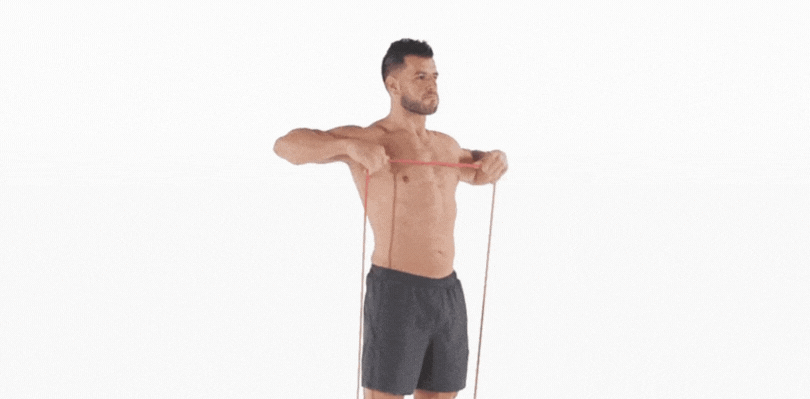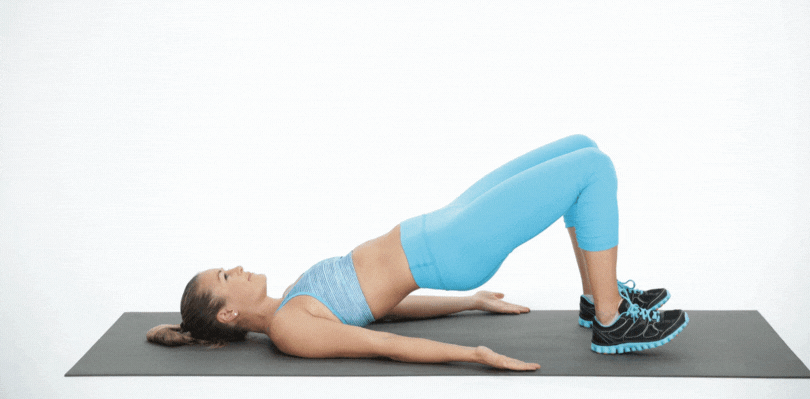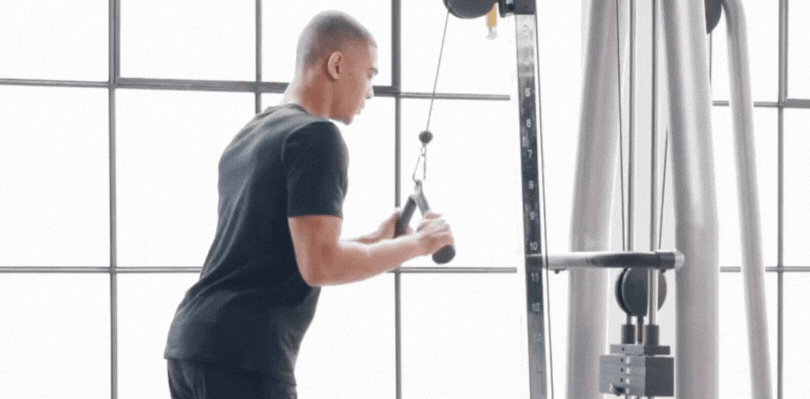Introducing the ultimate resistance band exercises that will shape up your body like never before. Resistance bands are versatile and portable workout tools that provide continuous tension throughout the movement, targeting multiple muscle groups simultaneously. Whether you’re a beginner or a fitness enthusiast, these eight exercises will take your training to new heights, delivering the results you’ve always dreamed of.
In this blog post, we will guide you through a variety of resistance band exercises designed to tone and strengthen your entire body. From sculpting your arms and shoulders to toning your legs and glutes, these exercises offer a challenging and effective workout for every muscle group.
Say goodbye to expensive gym memberships and hello to a convenient and cost-effective way of getting fit. Get ready to transform your body and unleash your full potential with these eight ultimate resistance band exercises. Let’s embark on this fitness journey together and watch your body shape up like never before!
8 Resistance Band Exercises
Here are some of the resistance band exercises that will target different muscle groups and help shape your body:
Banded Squats

Place the resistance band just above your knees and stand with your feet hip-width apart. Squat down by pushing your hips back and keeping your knees in line with your toes. The resistance band adds extra tension to engage your glutes and quads.
How It Works:
- Place the resistance band just above your knees.
- Stand with your feet hip-width apart.
- Engage your core, keep your chest lifted, and look straight ahead.
- Push your hips back and bend your knees, lowering into a squat position.
- Keep your knees in line with your toes and ensure your weight is evenly distributed.
- Push through your heels to stand back up, squeezing your glutes at the top.
- Repeat for the desired number of repetitions.
Standing Rows

Step on the resistance band with your feet shoulder-width apart and hold the ends of the band in each hand. Keeping your back straight, pull the band towards your chest, squeezing your shoulder blades together. This exercise targets your upper back and shoulders.
How It Works:
- Step on the resistance band with your feet shoulder-width apart.
- Hold the ends of the band in each hand, palms facing each other.
- Keep your back straight, core engaged, and shoulders relaxed.
- Pull the band towards your chest by squeezing your shoulder blades together.
- Pause for a moment, then slowly release the tension and return to the starting position.
- Repeat for the desired number of repetitions.
Banded Push-Ups

Wrap the resistance band around your back and hold the ends in each hand, positioning them just below your shoulders. Get into a push-up position and perform push-ups as usual. The band provides added resistance, challenging your chest, shoulders, and triceps.
How It Works:
- Wrap the resistance band around your back, positioning it just below your shoulders.
- Get into a push-up position with your hands slightly wider than shoulder-width apart.
- Engage your core, keep your body in a straight line, and lower your chest towards the ground.
- Push through your palms to extend your arms and return to the starting position.
- The resistance band adds an extra challenge to your chest, shoulders, and triceps.
- Repeat for the desired number of repetitions.
Glute Bridges

Lie on your back with the resistance band just above your knees and your feet flat on the ground, hip-width apart. Push through your heels to lift your hips off the ground while squeezing your glutes. This exercise targets your glutes and hamstrings.
How It Works:
- Lie on your back with the resistance band just above your knees.
- Bend your knees and place your feet flat on the ground, hip-width apart.
- Keep your arms relaxed by your sides.
- Press through your heels and lift your hips off the ground, squeezing your glutes.
- Pause at the top and then slowly lower your hips back down to the starting position.
- Repeat for the desired number of repetitions.
Bicep Curls

Stand on the resistance band with your feet shoulder-width apart and hold the ends of the band with your palms facing forward. Curl your hands towards your shoulders, engaging your biceps. The resistance band adds resistance throughout the movement.
How It Works:
- Stand on the resistance band with your feet shoulder-width apart.
- Hold the ends of the band with your palms facing forward.
- Keep your elbows close to your sides and your shoulders relaxed.
- Curl your hands towards your shoulders, contracting your biceps.
- Pause for a moment at the top, then slowly lower your hands back to the starting position.
- Repeat for the desired number of repetitions.
Triceps Extensions

Step on the resistance band with one foot and hold one end of the band with your hand. Extend your arm overhead, keeping your upper arm still, and feel the burn in your triceps. Switch sides to work both arms.
How It Works:
- Step on the resistance band with one foot and hold one end of the band with your hand.
- Extend your arm overhead, keeping your upper arm still and close to your head.
- Slowly lower your hand behind your head, feeling the stretch in your triceps.
- Extend your arm back up to the starting position, fully engaging your triceps.
- Switch sides and repeat with the other arm.
- Repeat for the desired number of repetitions.
Lateral Band Walks

Place the resistance band just above your knees and assume a quarter-squat position. Take small steps sideways, maintaining tension on the band. This exercise targets your hips, glutes, and outer thighs, helping to improve stability.
How It Works:
- Place the resistance band just above your knees.
- Assume a quarter-squat position with your feet shoulder-width apart.
- Keep your core engaged and your back straight.
- Take small steps sideways, maintaining tension on the band.
- Continue moving in one direction for the desired number of repetitions, then switch sides.
- This exercise targets your hips, glutes, and outer thighs.
Standing Shoulder Press

Step on the resistance band with one foot and hold the ends of the band at shoulder height, palms facing forward. Push the band upward until your arms are fully extended. This exercise works your shoulders and upper back.
How It Works:
- Step on the resistance band with one foot and hold the ends of the band at shoulder height.
- Keep your feet shoulder-width apart and your core engaged.
- Press the band upward until your arms are fully extended, keeping your palms facing forward.
- Pause at the top, then slowly lower the band back to the starting position.
- This exercise targets your shoulders and upper back.
- Repeat for the desired number of repetitions.
However, incorporate these eight resistance band exercises into your fitness routine to challenge your muscles, improve strength, and shape up your body. Remember to start with a band that provides enough resistance for your fitness level and gradually increase it as you get stronger. Get ready to experience a transformative workout that will take your fitness journey to the next level!
Benefits Of Doing Resistance Band Exercises
Resistance band exercises offer numerous benefits for your body and overall fitness. Here are seven key advantages of incorporating resistance band exercises into your workout routine:
Versatility
Resistance bands come in various strengths, allowing you to adjust the intensity of your workout. Also, they can target multiple muscle groups, including your arms, legs, chest, back, and core. With a single piece of equipment, you can perform a wide range of exercises to challenge and tone your entire body.
Convenience
Resistance bands are lightweight, portable, and easy to carry. You can take them anywhere, whether you’re traveling, working out at home, or exercising outdoors. They are an excellent alternative to bulky gym equipment, offering a convenient way to stay fit and active.
Joint-Friendly
Unlike heavy weights or machines, resistance bands provide smooth and continuous tension throughout the movement. This reduces the impact on your joints, making them a safer option for individuals with joint issues or those recovering from injuries. Resistance bands allow for controlled movements and minimize the risk of strain or injury.
Increased Muscle Strength
Regular resistance band training can lead to significant improvements in muscle strength and endurance. As you perform resistance exercises, the bands create resistance in both the eccentric and concentric phases of the movement, challenging your muscles and promoting muscle growth.
Improved Flexibility And Range Of Motion
Resistance bands allow you to stretch and lengthen your muscles, improving flexibility and range of motion. Incorporating dynamic stretching with resistance bands before and after workouts can enhance muscle elasticity and joint mobility, reducing the risk of muscle imbalances and injuries.
Enhanced Core Stability
Many resistance band exercises engage your core muscles, including your abdominals, obliques, and lower back. The bands provide constant tension that requires you to stabilize your core throughout the movement, promoting better balance, posture, and overall core strength.
Scalable For All Fitness Levels
Whether you’re a beginner or an advanced fitness enthusiast, resistance bands can be tailored to your fitness level. With various band strengths available, you can start with lighter resistance and gradually increase as you get stronger. This scalability makes resistance band exercises accessible to individuals of all fitness levels, allowing everyone to benefit from their effectiveness.
Also, by incorporating resistance band exercises into your fitness routine, you can enjoy these seven benefits, transforming your body, improving your strength, and achieving your fitness goals. Get ready to experience a versatile and effective workout that will take your fitness journey to new heights!
Tips And Techniques To Do Resistance Band Exercises
To maximize the effectiveness of resistance band exercises and shape up your body, consider implementing these tips and techniques:
Choose The Right Resistance Level
Select a resistance band that provides an appropriate level of challenge for each exercise. If the band feels too easy, opt for a stronger band, and if it feels too difficult to maintain proper form, switch to a lighter band. Gradually progress to higher resistance levels as you get stronger.
Focus On Proper Form
Pay close attention to your form throughout each exercise. Maintain a stable core, proper alignment, and controlled movements. Avoid using momentum or relying solely on the band’s tension. However, performing the exercises with the correct technique will target the intended muscle groups and reduce the risk of injury.
Control The Band’s Tension
Keep tension on the resistance band throughout the entire range of motion. Avoid letting the band snap back or go slack during the exercise. Maintaining constant tension ensures that the muscles are continuously engaged, resulting in a more effective workout.
Incorporate Variations And Progressions
As you become comfortable with the basic resistance band exercises, add variations and progressions to continue challenging your muscles. Increase the number of repetitions, add pulses or pauses, or try different angles or positions to target specific muscle fibers and stimulate further growth and definition.
Combine Resistance Bands With Other Exercises
Resistance bands can be integrated into a variety of workout routines. Consider incorporating them into bodyweight exercises, weightlifting, or cardio workouts. Combining resistance bands with other exercises can provide a comprehensive and well-rounded training program, targeting different muscle groups and enhancing overall fitness.
Consistency And Progressive Overload
Consistency is key to seeing results. Aim for regular resistance band workouts, ideally two to three times per week. Additionally, incorporate progressive overload by gradually increasing the resistance, repetitions, or difficulty of the exercises over time. This progressive challenge stimulates muscle growth and strength gains, leading to body shaping and transformation.
Furthermore, by implementing these tips and techniques, you can optimize your resistance band workouts and effectively shape up your body. Stay consistent, challenge yourself, and enjoy the benefits of a versatile and efficient training method.
FAQs
Can resistance band exercises help me shape my entire body?
Resistance band exercises are highly effective in targeting multiple muscle groups and can contribute significantly to shaping your body. However, it’s important to note that achieving overall body shaping also requires a combination of regular resistance band workouts, proper nutrition, and a well-rounded fitness routine. Resistance band exercises can tone and strengthen various muscle groups, but incorporating cardiovascular exercises, flexibility training, and other forms of resistance training can help you achieve a balanced and comprehensive body-shaping transformation.
How do I choose the right resistance band for my fitness level?
Choosing the right resistance band is crucial for optimizing your workouts. Resistance bands typically come in different colors, indicating varying levels of resistance. Beginners may start with lighter bands, while more advanced individuals may opt for stronger bands. It’s recommended to choose a band that allows you to perform exercises with proper form while still challenging your muscles. You should feel resistance but not strain or struggle excessively. Experiment with different band strengths to find the one that provides an appropriate level of challenge for each exercise. Remember, you can always progress to higher resistance bands as you become stronger.
Are resistance band exercises suitable for people with injuries or joint issues?
Resistance band exercises can be a great option for individuals with injuries or joint issues due to their low impact and customizable resistance. However, it’s crucial to consult a healthcare professional or physical therapist to determine which exercises suit your specific condition. They can provide guidance on modifications, specific exercises to avoid, or recommend alternative movements that are safer for your situation. Adjusting the band tension, and range of motion, or using different anchor points can help accommodate individual needs and ensure a safe and effective workout. Prioritizing proper form and listening to your body’s feedback is essential when exercising with resistance bands, particularly if you have pre-existing injuries or joint concerns.
